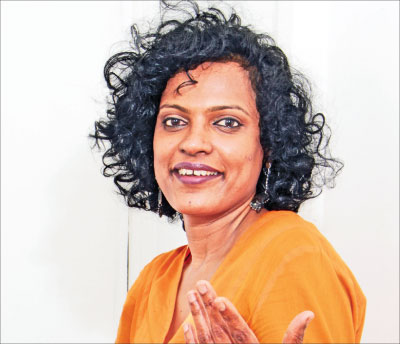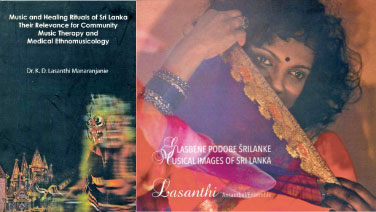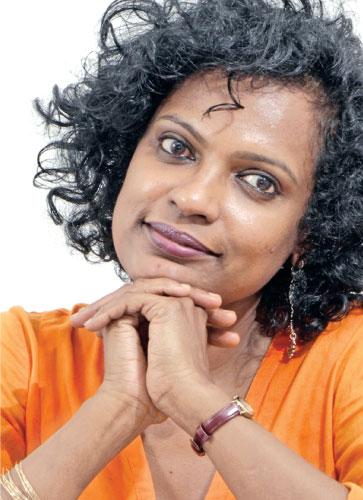Music is an indulgence, a form of expression, relaxation and at times, an addiction. Today, music has also been recognized for its therapeutic properties, especially, in treating psychological conditions, including depression and trauma. The practice of using music as a form of healing has existed throughout history, in various traditional and ritualistic practices around the world. It was this healing nature of different forms of music in the world that appealed to Ethnomusicologist, Dr.Lasanthi Manaranjanie.
Lasanthi’s first introduction to music was via her father, who had an affinity to sing folk songs, contemporary folk songs and classical music, at home. Later on, she received formal music education during her school years at Japalawatta MahaVidyalaya, from the music teacher at the time, P. A. Victor. She also studied under musical giants of the day, such as, B. Victor Perera. She then went on to earn a Bachelor’s Degree in Fine Arts, at the University of Kelaniya, a Master’s in North Indian Classical Music (Violin) at the Banaras Hindu University, India, and a Ph.D in Musicology at the University of Ljubljana, Slovenia.
It was while pursuing her Ph.D in Musicology at the University of Ljubljana, that Lasanthi discovered her passion for applying the healing powers of music. There, her focus was on medical ethnomusicology and music therapy.

What is medical
ethnomusicology?
Speaking of the difference between musicology and ethnomusicology, Lasanthi says, musicology focuses on western classical music, while ethnomusicology involves the study of world music.
“Ethnomusicology studies the music in the culture, not the product. For example, if we consider a song, analyzing the structure of that particular song is the musicologist’s work. For ethnomusicology, we have to know the background of the song and why the song was made and the reasons it was sung by the people, and so on,” she says.
Lasanthi explains that medical ethnomusicology is a combination of music, health, healing and culture, and a medical aspect is added to the music and culture. She adds that this includes how to use diverse musical forms to heal and maintain the well being of the individuals and consequently, the community as a whole.
“My basic background is as an Indian classical art musician, but I cannot work within this box. It was necessary to learn about the different genres of music in the world, to work with the patients,” she said.
Further elaborating on the subject, she said, sometimes she might come across a patient with an interest in rock music. Thus, if she has no knowledge on this genre, she might not be able to work with that particular patient. Also, she emphasizes that it is vital to know a patient’s cultural background prior to giving them music therapy.
For 10 years, Lasanthi has worked as a visiting professor at the University of Ljubljana, teaching South Asian music and Medical ethnomusicology. While in Slovenia, she has also had practical exposure to applied ethnomusicology, where she used it to help many troubled individuals. She then returned to Sri Lanka, to share her knowledge, understanding and experience with the younger generation Sri Lankans.
Medical Ethnomusicology in Sri Lanka
Lasanthi explains that the basic idea of Music Therapy and Medical Ethnomusicology is to help people maintain their well being. “In Western countries, this is practised in hospitals, but in Sri Lanka, it is not yet introduced. Also, there is no expertise. But, there are many channels through which we can use this to help people,” she says.
Lasanthi says, Western medicine has failures in some areas, including the treatment of psychological disorders. “This is why they have introduced music therapy in Psychiatric hospitals in Europe. Just a pill cannot help in these situations,” she says, adding that music releases the tension and improves the mental status through sounds.
Lasanthi says, medical ethnomusicology is a new avenue to be explored in Sri Lanka, and many things can be achieved by teaching the subject in the country. “ For example, this can be a form of therapy for tsunami victims, individuals exposed to war zones and those undergoing other forms of psychological turmoil,” she says.
She adds, it would take years to establish music therapy in Sri Lanka, but someone has to initiate it. “This is my dream, I want to use applied ethnomusicology, music therapy and medical ethnomusicology to work with marginalized communities and minorities,” she says.
She notes that not much research has been done on the music of marginalized communities and minorities in the country, and opines, the time is ripe for students and experts to conduct comparative studies on the music of these people.
Lasanthi notes, having heard of certain instances in Sri Lanka, where a song is played for three minutes for the purpose of therapy, she says, it is a wrong concept, since music therapy does not work in the same way as giving a pill to a patient.
“Music comes in the form of intangible waves. We do not know how long the patient would take to get used to the particular type of music. Also, we have to use many samples until we find the favoured genre of the patient,” she says.
Lasanthi adds, the knowledge of traditional music around the world, learned in ethnomusicology, is thus applied to find the type of music favoured by the patient.

Lasanthi is also the author of the book ‘ Music and Healing Rituals of Sri Lanka Their Relevance for Community Music Therapy and Medical Ethnomusicology.’ Aimed at academics and students, the book covers the therapeutic aspects of rituals, the healing rituals in Sri Lankan Buddhist society, selected case studies on sanniyakuma, bali and pirit, the relationship between rituals and Western and Ayurvedic medicine, and the therapeutic potential of rituals in contemporary city life.
Lasanthi has also recorded a CD, to promote different types of Sri Lankan music by introducing the soundscape of Sri Lanka to European countries. It is a compilation of folk music, baila, Tamil war songs, classical and contemporary Sri Lankan music which display Indian influence, Afro Portuguese influence, Noorthi, and so on. It is recorded with four Slovenian musicians, playing the harmonium, flute, violin, guitar and tabla, with the vocals by Lasanthi herself.



